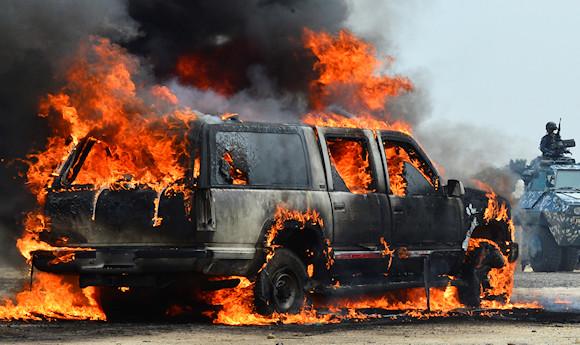In an absolute sense, security, whether global, regional or national, consists in the utopian absence of risks and dangers.
On the other hand, as it is situational and therefore variable in time and space, security realistically relies on the ability to cope with risks and dangers of multiple natures by setting up and setting up adequate prevention and repression measures, as well as damage containment, in good time. It should also be borne in mind that security goes beyond military defence, however essential it may be.
In the current historical situation, daily attention tends to focus on the Russian-Ukrainian question. The war conflict between the two countries, characterized by clear international implications, is in fact a serious challenge to global security and falls mainly, but not exclusively, within the sphere of conventional conflict.
However, it is equally fundamental to continuously monitor and apply measures to combat the unconventional conflict which in the modern context has continuously afflicted the international community since the end of the Second World War.
Unconventional conflict esula both from the civil, orderly and democratic dispute and from the classic battlefield regulated by the rules of international law.
Unconventional conflict hugs numerous forms – briefly illustrated below and accompanied by relevant current examples – attributable to two cases.
Of the two, the first case it is composed solely of manifestations such as disinformation, clandestine or semi-clandestine multinational networks, the so-called rogue states, the coup d'état, certain aspects of organized crime and irregular immigration.
• The misinformation consists of the creation and dissemination of false news or the biased manipulation of news, in both cases to damage an opponent and thus influence public opinion. Recurring conspiracy theories or accusations, old and new, concern the USA and NATO. A particular current example is the false news of Russian origin in Arabic on the burning of the Koran to counter Sweden's accession to the Atlantic Pact.
• The establishment and use of clandestine or semi-clandestine networks it allows subversive or violent actors to have an impact both within individual states and at a regional or broader geopolitical level. The case history includes structures or links mainly of ideological, propaganda, technical and logistical coordination, but also actual operational initiatives. Current examples are the consortia that connect elements of various antagonistic inspiration, including sympathy groups that power the components aggressive of anti-militarist, ecological and anti-globalization movements.
• I rogue states or, rather, "outlaw states" are dedicated to supporting terrorist elements; to the direct use of these elements; attempted or completed political assassination abroad against dissident citizens who have fled; to unjustified armed intervention outside one's national borders; to the production or acquisition of weapons of mass destruction or to the making available of such instruments to other States or non-State groups in contravention of international agreements; to the violation of human rights wherever committed.
They currently fall into one or more of these categories: Afghanistan, North Korea, Cuba. Iran and Syria.
• The coup d'etat, or the sudden and forced removal of a government by a relatively modest-sized group within the institutions. The existence of a conspiracy is implicit, regardless of the outcome.
In the current decade, the coup d'état – most easily carried out in the Global South, formerly the Third World – has occurred, in some cases repeatedly, in seven African states: Mali, Chad, Guinea, Burkina Faso, Sudan, Niger and Gabon.
• Certain activities of organized crime, i.e. illicit entrepreneurship, collusion with public administrations, the pollution of the legitimate economy and the exploitation of subversive or social phenomena can still be found today.
• About theirregular or clandestine immigration, there are dangers to domestic and international public order, including the deplorable trafficking of human beings; the insidious infiltration of organized crime with the aim of exploiting immigrants by introducing a substantial number of them into the black market or prostitution market and other illicit circuits; cases of corruption of public officials and fraud in the management of reception facilities; the degeneration of activism both against and in favor of reception; illicit behavior by immigrants ranging from common delinquency to terrorism. Particular attention also requires the impact on the receiving society when immigration creates imbalances in the social structure due to cultural and religious disintegrative impulses, jeopardizing social peace.
In turn, the second case of unconventional conflict includes five manifestations that simultaneously rise to stages in the potentially progressive spectrum of unconventional conflict, namely subversive agitation, terrorism, insurgency, civil war and revolution.
• Thesubversive agitation – always preparatory to terrorism and sometimes directly to the insurgency – is practiced by various activists aiming to achieve political, political-economic, political-religious goals or those linked to individual specific causes. Contrary to spontaneous protest demonstrations, even at the level of riots, which arise in reaction to negative environmental situations attributable or attributed to historical, social, religious, economic or political factors, subversive agitation, while actively exploiting them all, is the product of a dominant factor, i.e. the presence of one or more subcultures made up of radical or revolutionary extremists. Subversive agitation makes greater use of non-bloody means, even if illicit or incorrect, including biased propaganda and disinformation; incitement not to observe the laws or some of them; gatherings and processions detrimental to the orderly conduct of social life and economic processes; the occupation of properties; street riots directly provoked or through infiltration.
The use of violence generally ends in acts of vandalism and the damage or destruction of public and private assets but, less frequently, it also involves injuries to people. Compared to the recent past, far-left, far-right and ethno-independence activism appears to have diminished, while insurrectionary anarchism has been revitalized and radical antagonism acting according to the well-known slogan No Tav, No Tap, No Nukes, No Muos. Furthermore, the developments of "eco-vandals" must be followed carefully Extinction rebellion need last generation.
• The terrorism – of which there is no universally accepted definition but of which it is possible to formulate a functional description based on observations and considerations of an empirical nature, particularly as manifested since the XNUMXs – is characterized by four essential constitutive elements: criminal violence, which distinguishes it from the legitimate use of force; the political, political-religious or political-social motive, which differentiates it from common delinquency and organized crime, whose ultimate aims are generally economic and in any case not political; clandestinity at the level of structures and dynamics, which separates it from ordinary political violence by its nature in the open; action emanating from non-state actors, with or without the support of supporting states, which distinguishes it from violations of international and humanitarian law directly attributable to individual states.
Furthermore, it should be kept in mind that terrorism at the instrument level can occur in all stages of unconventional conflict, therefore already from the stage of subversive agitation. For the purposes of global security, exponents of radical Islam such as the well-known al-Qaida and ISIS remain particularly threatening and dynamic.
• Theonset – both a further manifestation of unconventional conflict and a subsequent stage, depending on the case, to subversive agitation or terrorism – can be associated with at least partial and temporal control of the national territory and the population. It is classified according to the category of the institution targeted: the state or political community, the political system or form of government, the personalities in office considered illegitimate and the political directions. Its sphere of action aims at the progressive control of the territory and resources of a country, making use of illegal political organizations and irregular military forces used against the authorities in power. Therefore, it involves firefights with government armed forces, although normally at low levels and based on the element of surprise.
Compared to subversive agitation and terrorism, insurgency requires greater organizational capacity, articulation of commands, planning, training and human and material resources. Unlike the insurgency stage, the terrorism stage does not involve terrorist control of the territory. It should also be remembered that terrorism, as an instrument, can enter the insurgency stage, as currently emerges from situations in Iraq, Syria and elsewhere.
• The civil war – found above all in developing countries and in countries in the process of political-economic transition from the Second World, under social-communist management, towards the First World, under democratic and liberalist management – occurs when the population of a State splits actively or, as often happens, above all passively in two opposing parties that compete with weapons for governmental power; or, when a considerable part of the population wages an armed struggle against the established authority. It is, therefore, a clear contrast between two components of the national population and is distinguished, in terms of numerical and operational intensity, from all previous manifestations or stages of unconventional conflict: subversive agitation, terrorism and insurgency.
• A subversive movement that successfully passes through the various stages considered above achieves the fruition of the end chosen from the beginning, that is, the revolution which, in the political sphere, involves the subversion and replacement of the contested institutional system.
Of the aforementioned two types of unconventional conflict, the second is of greater concern in three respects: (1) it is often accompanied by manifestations of the first type; (2) expresses proven structures and modus operandi for both old and new aggregations; (3) is exploitable in latere also by actors involved in conventional conflicts.
At the same time, it should be noted that various manifestations/stages of unconventional conflict are often called asymmetric warfare generally translated as “asymmetric warfare”, even if it would make the term “asymmetrical way of warfare” better because warfare, a term that is not easily translatable, expresses the conduct of actions that range from harmful antagonism to actual violent aggression and even war operations. However, for asymmetric warfare means the neutralization of a more powerful adversary (actual or believed to be so) through the circumvention of its potential and the exploitation of its weaknesses or vulnerabilities, precisely as occurred on 11 September 2001.
Finally, it should not be forgotten that, particularly in the fight against unconventional conflict in its many forms, the indications-and-warning intelligence, that is, premonitory intelligence, based on a series of indicators which, if skilfully applied and analyzed, can allow the formulation of adequate prevention, repression or containment measures in useful advance.
* The professor. Vittorfranco Pisano, currently secretary general of the National Register of Intelligence Analysts and professor of "Terrorism and Non-Conventional Conflict" at eCampus University, has been consultant to the Subcommittee on Security and Terrorism of the United States Senate and course reviewer in the under the U.S. Department of State's Counterterrorism Assistance Program.
Photo. US Army












